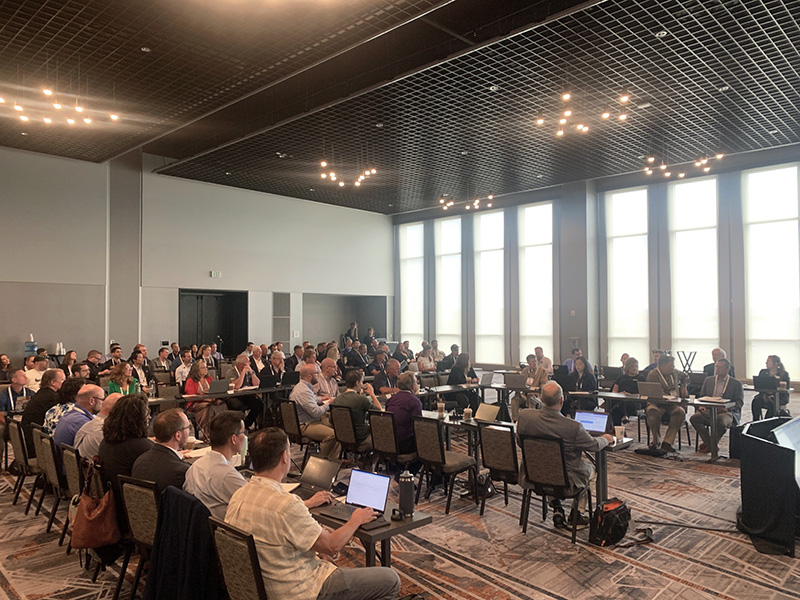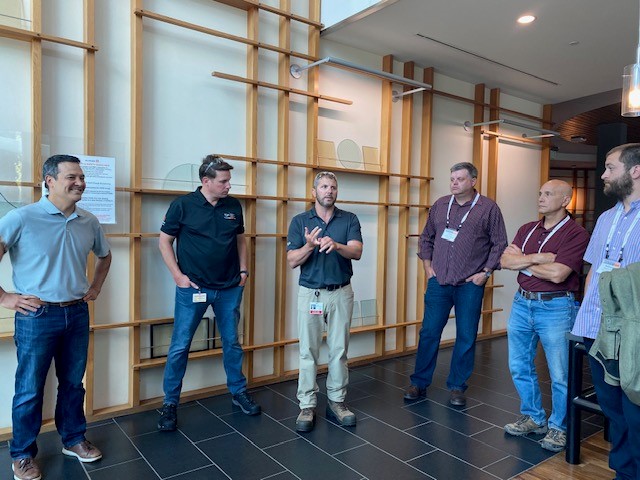5 Takeaways from NGA Glass Conference: Tacoma

Glass and glazing industry technical leaders gathered July 25-27 for the National Glass Association’s NGA Glass Conference: Tacoma, where high-performance glazing, industry code updates, workforce development challenges and more took center stage.
Here are five top takeaways from the meeting. For updates on committee activities from the conference, check out the complete report from the NGA technical team.
1. NGA advocates for glass around the globe
NGA’s Vice President off Advocacy and Technical Service Urmilla Sowell kicked off NGA Glass Conference: Tacoma with an overview of the association’s activities to ensure the glass industry has North American representation in any standard organizations or code and technical activities around the world.
“If it will influence the glass and glazing industry in North America, we are involved,” said Sowell.
NGA Code Consultant Nick Resetar, Roetzel & Andress, described NGA’s advocacy efforts as a “missile defense system.”
“We’re there lurking in the shadows. We don’t fire often, but we fire when we need to. Our purpose is deterrence. We want to deter other industries, other activist groups, from encroaching on our piece of the pie mainly in the code world, making it harder to sell glass. My job for you all is making it easier for you to sell glass and helping you to sell more glass.”
2. More stringent energy codes are on the horizon
NGA Energy Code Consultant Tom Culp, owner of Birch Point Consulting, offered a look ahead at energy codes. In short, codes are trending sharply toward more and more stringency, and this trend will continue.
“We’re seeing an incredible new focus on energy efficiency, moving much more rapidly than anything I’ve seen in the last 20-plus years since I’ve been doing this,” Culp said.
IECC and ASHRAE 90.1 now have goals to achieve net-zero energy by 2030-31. This will be significant increases in efficiency requirements (prescriptive and new energy credits) and renewable energy requirements (including BIPV), said Culp.
Culp closed with an important question for attendees: As we move towards net-zero buildings, what will they look like? Will the industry move toward well-balanced buildings that feature high-performance glass and glazing systems in conjunction with on-site renewables? Or will they opt for “new-age brutalism,” with windowless spaces with no daylight, views, ventilation, etc.? “Is the future of net-zero buildings the Jetsons or the Flintstones?” Culp said.

3. Emerging technologies are here, but cost barriers remain
Several discussions during NGA Glass Conference focused on the emerging glass and glazing technologies and delivery systems that will help the industry meet the most stringent performance requirements.
Robert Hart, principal scientific engineering associate at Berkeley Lab, spoke about emerging high-performance technologies—specifically thin triples.
Thin glass, when used in a multi-cavity IGU, allows for large thermal performance improvements without adding much weight. Additionally, thin-glass IGUs are much thinner than traditional multi-cavity IGUs and can more easily be accommodated by existing framing systems.
However, there are roadblocks for thin triples, says Hart. Technical concerns (such as safe handling, compatibility with existing fabrication equipment, etc.), code and regulatory questions (mainly related to safety and building code applicability), and cost.
Steve Selkowitz, principal of Stephen Selkowitz Consultants and affiliate at Lawrence Berkeley National Laboratory, also addressed the ongoing hurtles to adoption of such high-performance solutions—particularly the greater cost. “We need to convince owners to make investments in things they aren’t doing right now,” Selkowitz said. “Most owners are going to care a little bit about the planet. But they care more about the people that occupy the space. So, we need to bring it back to the occupants.”
While the glass and glazing industry has developed a wide range of product solutions to provide better energy and thermal performance on the façade, could part of the solution be in how high-performance façade systems are delivered to the project, Selkowitz asked.
“How can we change the design delivery system? … In Europe, they are changing the model to having someone deliver façade as a service. It’s like a software. You don’t buy it. You update and change it over time,” he said. The model would reduce the up-front cost to the building owner, while better ensuring long-term performance, as the systems would be updated throughout the life of the building.
4. Fabricator training takes center stage
During the conference, NGA’s vice president of workforce development, Jenni Chase, announced the association’s new initiative for helping glass fabricators address an ongoing skilled labor shortage through an online training program. “We are going to be releasing MyGlassFAB—consistent, accessible, skills-based training for glass fabrication production personnel,” Chase said.
“You inform people for knowledge. You educate people for understanding. You train people for performance. The missing piece is the actual training,” Chase continued. “People may understand what a piece of tempered glass is. But can they measure it accurately? Handle it correctly?”
The online training program from the NGA is scheduled to launch at GlassBuild America, Oct. 31-Nov. 2 in Atlanta, said Chase.
5. Economy defies expectations while industry investments stay strong
During the presentation “10 Industry Metrics You Should Be Watching,” Katy Devlin, NGA content director and Glass Magazine editor-in-chief, offered a closer look at macro-economic data and industry-specific statistics.
“When I spoke in January, 61% of economists were projecting the U.S. would enter recession during 2023. The economy has proved much more resilient than most expected. In fact, GDP has grown since Q2 2022,” said Devlin.
Supply chains and inflation continue to ease, while North American glass and glazing companies are growing and investing in their companies, said Devlin.
“Eighty-one percent of fabricators say they plan to invest in capital equipment this year. This comes on the heels of an incredible year for investment in 2022 in which 91% of fabricators said they made capital investments,” said Devlin, referencing results from Glass Magazine’s Top Glass Fabricators survey, published in April.
Companies are also investing in automation, with 66% of fabricators saying they plan to invest in automation solutions this year, and 80% reporting that they used more software for plant optimization in the prior year.
Check out more coverage from NGA Glass Conference: Tacoma on Twitter and LinkedIn.

